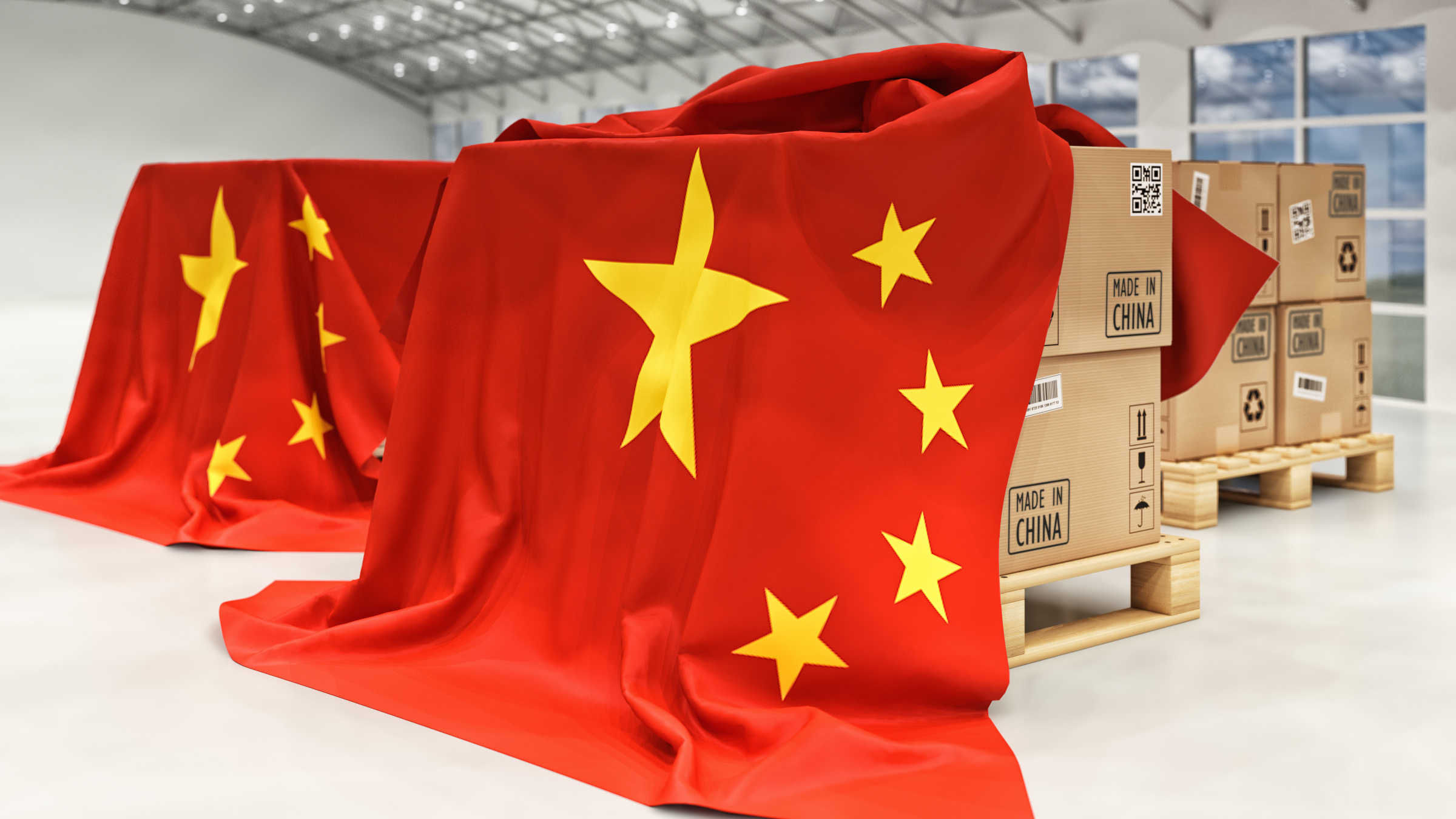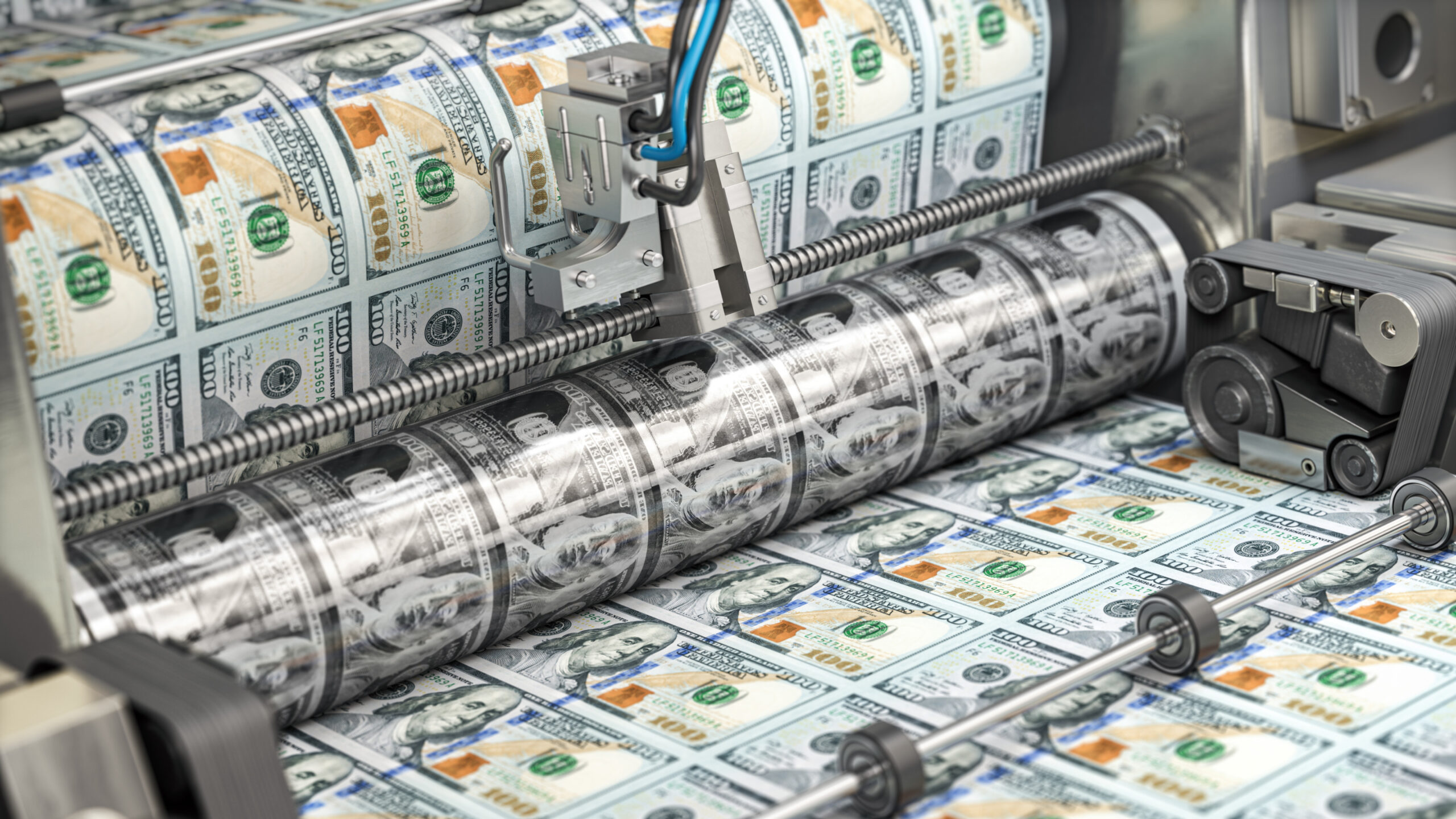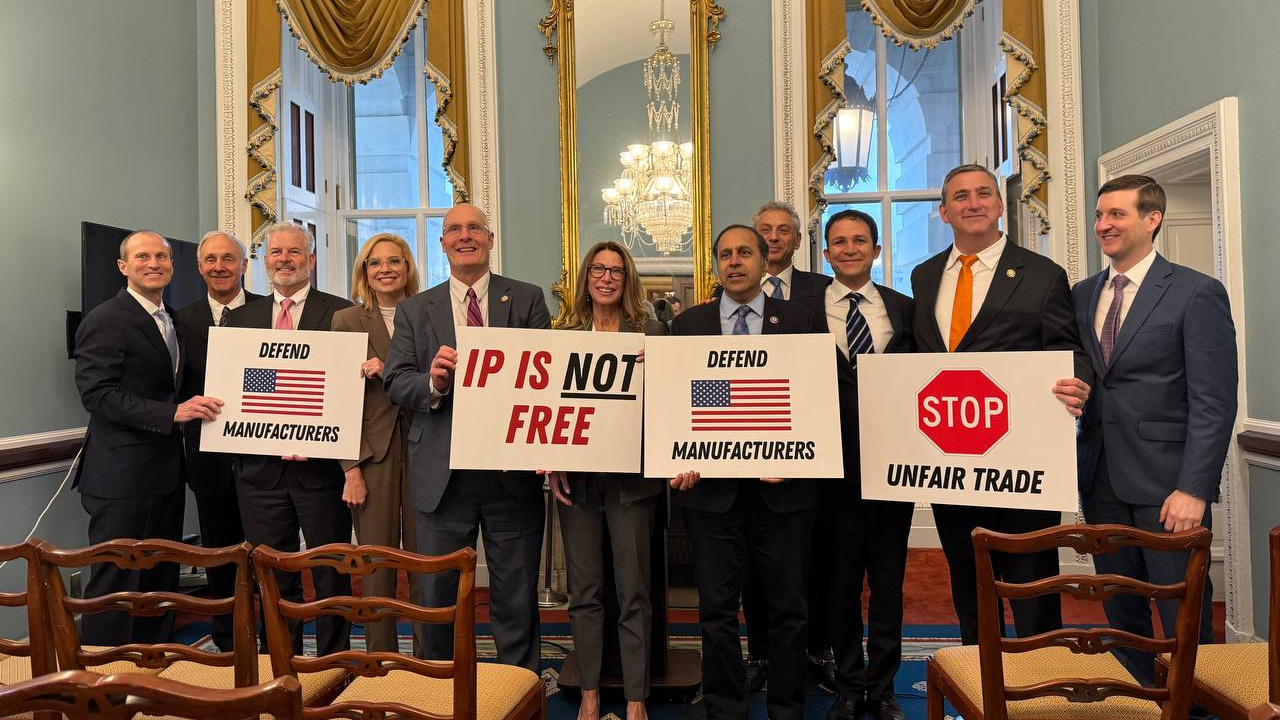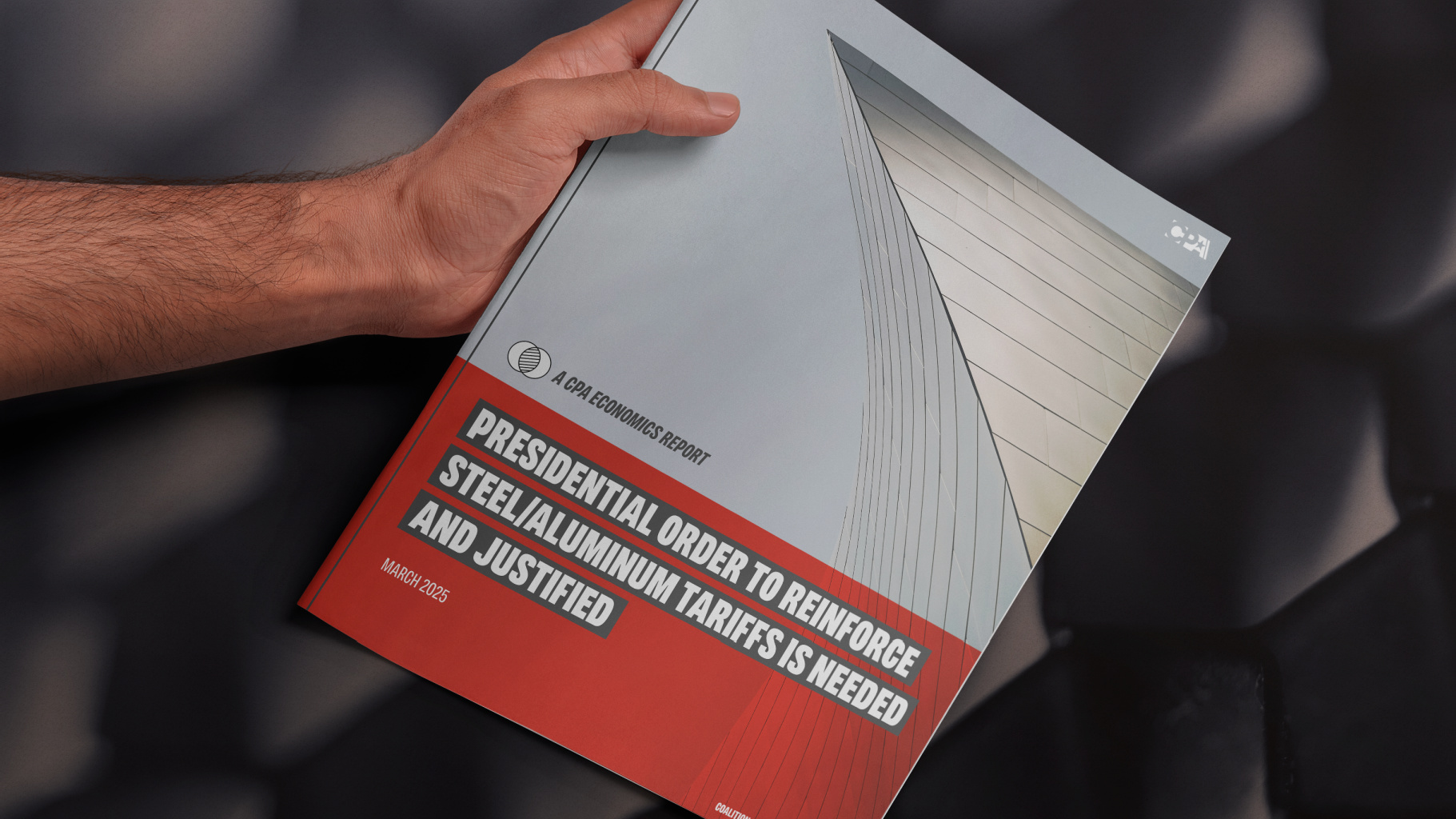The House Committee on Commerce and Energy revealed a house divided on President Biden’s post-fossil fuels economy, a growing concern of America’s dependence on Asian supply chains for a clean energy future, and doubts that the government will put Buy American policies to work to make sure domestic manufacturing plays any role at all.
Roxanne Brown, international vice president for United Steelworkers (USW), was one of four witnesses on Tuesday to speak at the hearing titled “Securing America’s Future: Supply Chain Solutions For A Clean Energy Economy”. In her opening testimony, she advised Washington to secure those new supply chains through government procurement orders via the Buy America act.
“About a decade ago, eager to capitalize on the opportunities in the wind energy market, one company we work with secured investments in their facility, hired additional workers, and began producing metal rings for wind turbines,” she said. “But they could not compete with foreign-made products and eventually eliminated those jobs created a few years earlier because they did not have stable wind energy customers,” she said in her opening testimony.
Brown said USW had “significant reservations” regarding H.R. 5492, the Manufacturing Economy and National Security Act, an early House bill proposed in October.
Provisions in the bill would provide federal resources to move supply chains from “countries of concern” to third-party countries rather than to the U.S. She said that would lead to transshipments and circumvention of anti-dumping rules to dump goods into the U.S. This has been going on with China solar in Southeast Asia. Commerce opted out of making a case out of it last week.
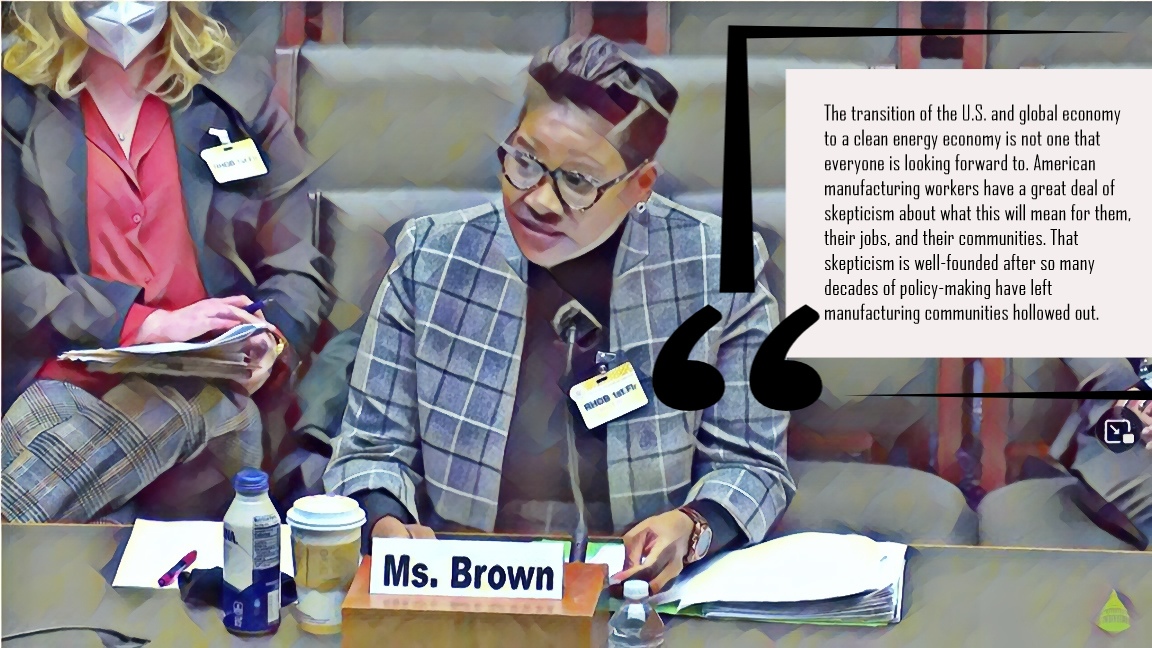 Other witnesses expressed concern that the U.S. was losing out to China in the bid to go green. This is mainly due to the role of the state in the Chinese economy. They often mandate purchases of certain types of vehicles at government-run businesses, which is not hard to do considering the number of state-owned enterprises running around in China.
Other witnesses expressed concern that the U.S. was losing out to China in the bid to go green. This is mainly due to the role of the state in the Chinese economy. They often mandate purchases of certain types of vehicles at government-run businesses, which is not hard to do considering the number of state-owned enterprises running around in China.
“The U.S. is not positioned to lead in these rapidly expanding segments of the global economy,” warned Ethan Zindler, head of Americas for BloombergNEF. “Chinese companies dominate virtually every segment of the manufacturing value chain for silicon PV modules,” he said in his opening remarks about a particular class of solar panels.
In wind turbine production, only GE is a recognizable American brand, though their wind turbine manufacturer is headquartered in Paris.
China is expanding in wind at home and their biggest wind turbine maker Xinjiang Goldwind Science and Technology (yes, that Xinjiang) installed over 40 new turbines in the U.S. during 2020, according to the Global Wind Energy Council.
“When it comes to electric vehicles, the most critical and costly component is the battery and in terms of volume, the U.S. today is a laggard in the final assembly of such batteries and in the production of battery components,” Zindler said. China, Japan and South Korea are the primary battery makers globally.
Zindler told Congress that the U.S. didn’t have a ready-made market to create demand for the clean energy economy, suggesting China and Europe did.
“Today, finished cathode active material is imported into the U.S. from Asia for local integration into batteries,” said Jackson Switzer, senior director of Redwood Materials, a battery metals recycling company. You can read his opening testimony here. “To keep plans with EV goals domestically, the U.S. would need to import greater than two million tons of cathode active material through 2030 with a lost economic value of greater than $85 billion.”
Supply issues or not, another reason why the deployment of these technologies has been limited despite direct financial incentives for EVs and hybrid vehicles, plus government targets to advance wind and solar over the last 30 years (with some $50 billion in federal expenditures in tax incentives and grants between 2005-2015 alone), these two technologies produce less than 4% of our primary energy requirements. Moreover, as witness Lucian Pugliaresi, president of the Energy Policy Research Foundation pointed out in his opening statement, states get much more tax revenue from the fossil fuel industry.
Both parties are at odds over how fast to move on this issue.
Rep. Diana DeGette (D-CO-1) commented on just how divided the House is. “This is a hyperpartisan issue. It’s too bad,” she said.
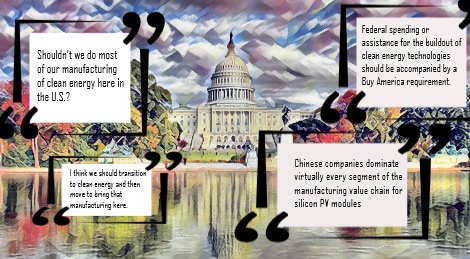
Democrats want to move fast on a post-fossil fuel economy, believing it will create entirely new industries and expand on old ones like solar, an industry that is currently surviving thanks to tariffs.
Republicans, on the other hand, are not necessarily against wind and solar, but want to keep the U.S. independent from other countries and believe doing so requires expansion of natural gas and even nuclear.
Democrats are concerned about the environment and don’t want to dig for minerals here. Republicans think that’s a necessary starting point if we are going to source polysilicon for solar, and the basic minerals that go into making batteries for EVs.
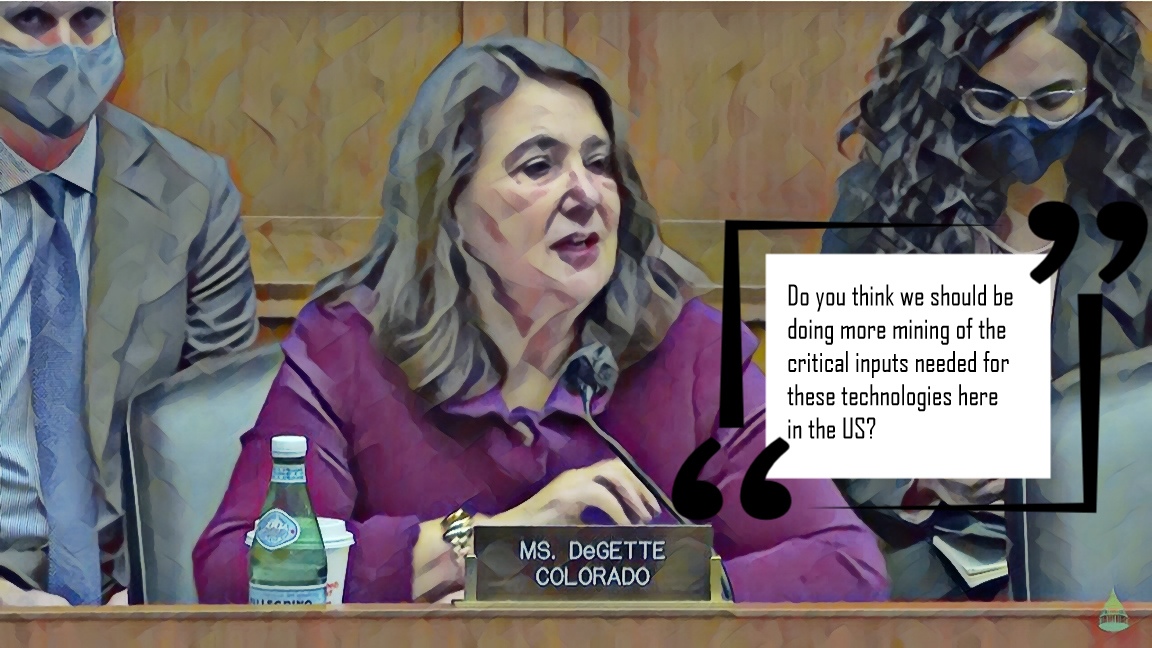 DeGette asked the panelists if the U.S. needed to do more mining in order to have a key starting point to make all of these things the Committee was talking about today.
DeGette asked the panelists if the U.S. needed to do more mining in order to have a key starting point to make all of these things the Committee was talking about today.
Zidler: Yes, if you want energy independence.
Brown: Yes.
Switzer: It’s complicated. Not a yes or no question.
DeGette: Okay, so you can’t answer it. But do you think it would be a good goal?
Switzer: In general, the world will need more mining.
DeGette immediately dismissed him and moved on to Pugliaresi. “What about you?” she asked.
Pugliaresi: Yes.
DeGette: Shouldn’t we do most of our manufacturing of clean energy here in the U.S. or at least be partners with countries that have the same high labor and environmental standards?
Zidler: Yes, that should be the goal.
Brown: Yes.
Switzer: I think we should transition to clean energy and then move to bring that manufacturing here.
DeGette: I totally agree.
This is a similar line shared by climate advisor John Kerry, however, and should come with a warning label. CPA believes making sure the U.S. does not become dependent on Asia and Europe for wind and solar is imperative. The argument that the U.S. must act now to increase solar and wind production serves China, especially if the Biden administration is going to reduce solar safeguards. Subsidies are fine, but Washington needs to be mindful that it will never out-subsidize Beijing.
Just as important, clean supply chains matter. Rep. DeGette pointed out the importance of working with countries that have similar labor and environmental standards. China is ripe with forced labor violations in Xinjiang, violations that China solar importers are busy looking for work-arounds. The U.S. should not cede human rights and forced labor violations to climate change policies.
Pugliaresi said that reducing carbon emissions is a global challenge, anyway.
He noted that even if the U.S. made it to net zero, the net reduction in carbon emissions will be relatively small, perhaps no more than 20% less in 2050, unless China and India were in complete lockstep.
Energy and Commerce Chairman Frank Pallone, Jr. (D-NJ) touted the clean energy economy. He called it an industry “guaranteed to boom.” Policymakers need to be laser-focused on making sure that boom is not a job market boom in Asia.
China controls over 70% of solar PV module manufacturing worldwide and has a roughly 75% market share for solar cells. The rest of it is in southeast Asia, where China is now heavily invested.
“The question is whether we want the United States to lead or follow in the clean energy transition,” said Pallone. “The Biden Administration has taken decisive action to halt the import of some goods sourced from countries that violate fundamental human rights. But we can and must do more.”





